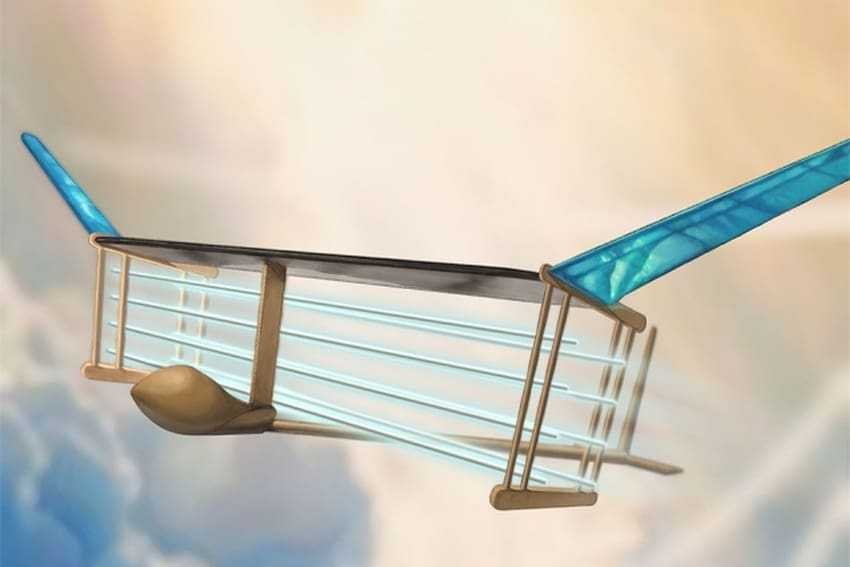The University of Massachusetts, the MIT known to everyone, built the first plane to fly without moving parts using ionization. An invention that we may see is applied to extremely quiet drones as well as for hybrid aircraft.

Aircraft either carry one machine εσωτερικής καύσης που παράγει καυσαέρια είτε φέρουν ένα ηλεκτρικό μοτέρ, δεν μπορούν να αποφύγουν την ηχητική ρύπανση. Το θόρυβο δηλαδή. Και αυτό γιατί πετούν στηριζόμενα σε κινούμενα μέρη που προωθούν τον αέρα και κατά extension and the plane itself. MIT researchers, however, are coming to overturn a story of almost 100 years, since the Reit brothers flew the first 1903 airplane.
The researchers at MIT have built and successfully thrown an ionic aircraft that does not use mobile parts. The large 5 meter wing aircraft weighs approximately 5 pounds and carries a series of fine wires, which are positioned as a horizontal fence along and below the front end of the airplane blade. The wires act as positively charged electrodes, while similarly arranged thicker wires running along the rear end of the airplane blade serve as negative electrodes.
The airplane shaft contains a lithium-polymer battery pack. Special machines convert battery power to 40.000 volts by charging the cables positively.
Once the cables are positively charged, they attract and release negatively charged electrons from surrounding air molecules, like a giant magnet that attracts iron chips. The air molecules that remain behind are ionized and in turn are attracted by the negatively charged electrodes at the rear of the airplane wings.
As the newly formed ion cloud flows to the negatively charged wires, each ion collides millions of times with other air molecules, creating a thrust that pushes the aircraft forward.
Aircraft powered by ionized winds are not a new invention. The technology has been around for years, but until now the machines operated on a benchtop as they were limited by the cables connecting these machines to power supplies high voltage. The solution here was a custom battery-powered power supply that could produce the necessary power for a 60-meter flight, the length of the indoor field where the tests took place. Of course in all the tests there was no noise since there are no moving parts.
There is a very long way to see this technology in the sky. However, the potential of this invention is evident. Surely at some point you will see very quiet aircraft, such as drones, that will not emit irritating noise. There could also be hybrid planes that could improve fuel efficiency. And since there are no moving parts, the ion-impulse aircraft could be more reliable than the conventional ones.
Watch the relevant MIT video below:





